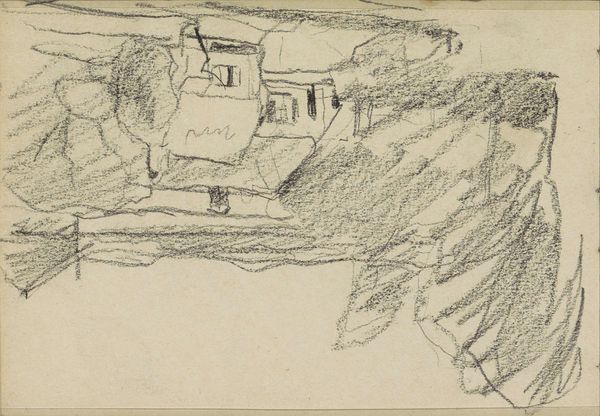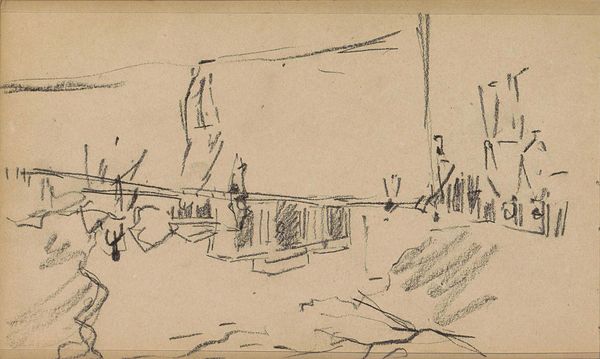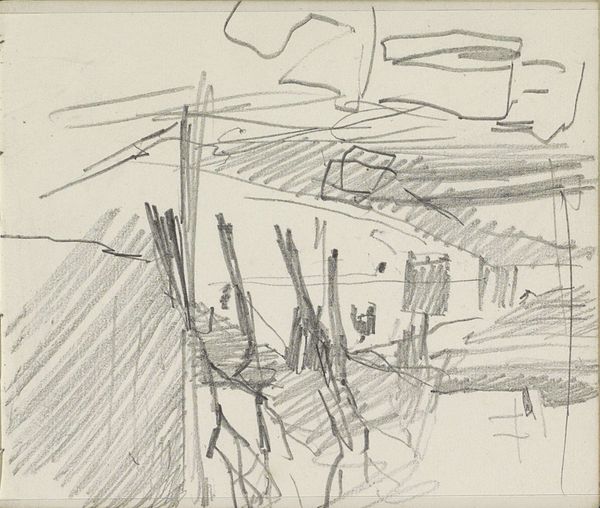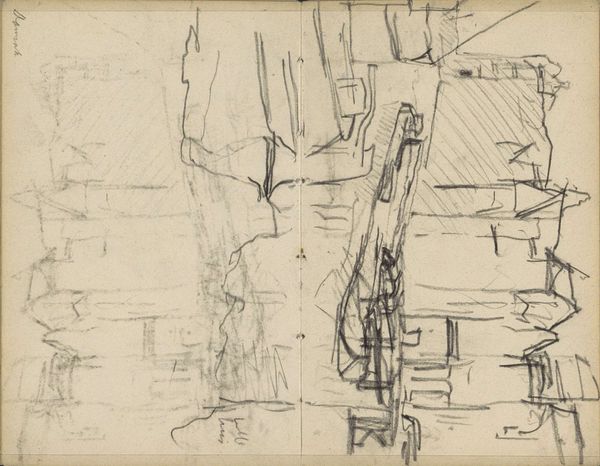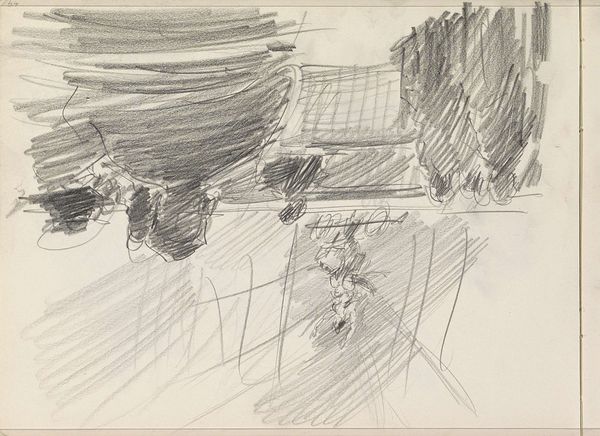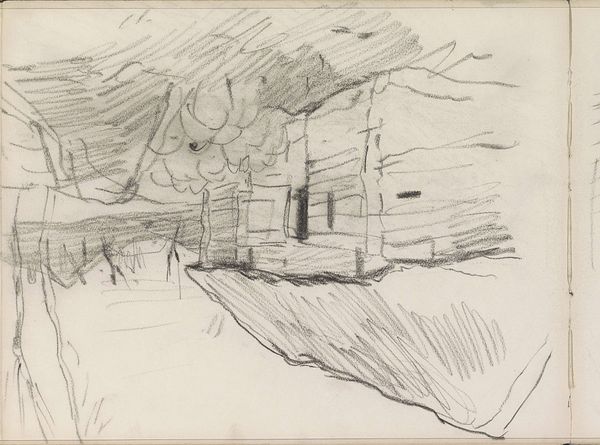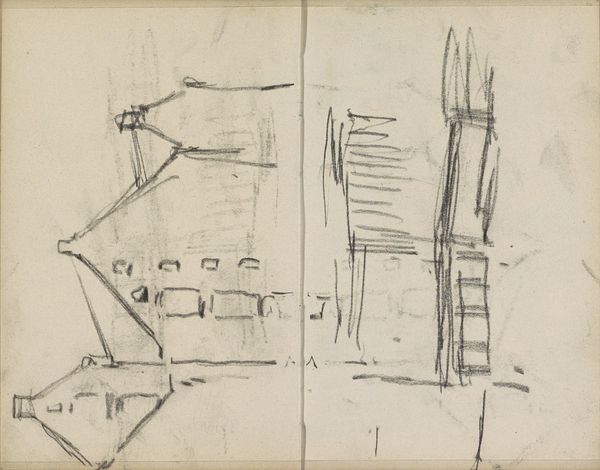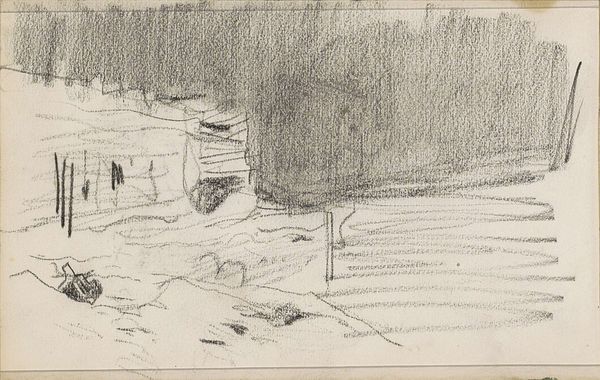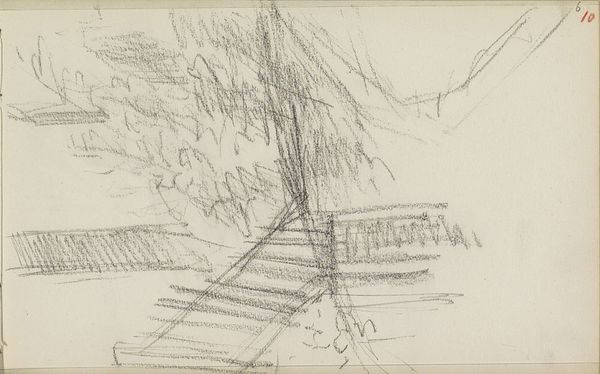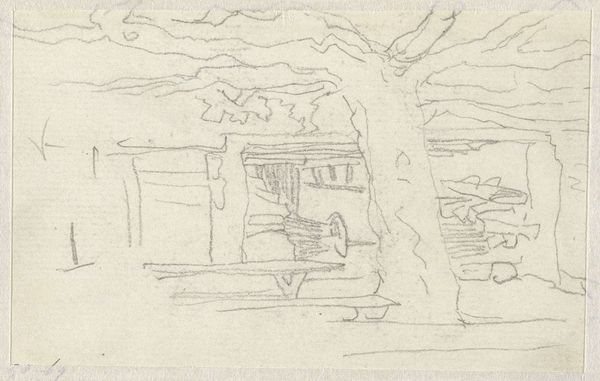
Copyright: Rijks Museum: Open Domain
Isaac Israels made this pencil drawing, "Terrace by the Water, Possibly near Voorburg," sometime between 1865 and 1934. The loose sketch depicts a waterside scene that may have been captured in the area around Voorburg, near The Hague. Israels belonged to the Amsterdam Impressionism movement, which embraced the depiction of everyday life and ordinary subjects. Unlike earlier Dutch masters who idealized their subjects, Israels and his contemporaries sought to capture the fleeting moments of modern urban existence. Israels's work reflects the shifting social landscape of the Netherlands during the late 19th and early 20th centuries. As industrialization and urbanization transformed Dutch society, artists like Israels turned their attention to the experiences of ordinary people. Museums and galleries increasingly showcased these new, modern works, shaping public taste and promoting a sense of national identity rooted in the present. Historians rely on archival documents, period publications, and critical essays to reconstruct the social and institutional context that shaped the production and reception of art like this. By exploring the world in which artists like Israels lived and worked, we can gain a deeper understanding of the complex relationship between art, society, and cultural change.
Comments
No comments
Be the first to comment and join the conversation on the ultimate creative platform.

